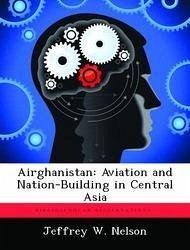This paper investigates comparative costs and benefits of making Afghanistan an air-faring nation. It argues that it is appropriate to invest the time and money to create an air infrastructure (as opposed to a more robust road or railroad network) in Afghanistan to link the different parts of the country. In assessing this information, this paper examines how the current and proposed strategies help to strengthen the country and aid in its long-term growth. While cost is an important factor in all decisions, it may not be the deciding factor. The ability of the nation of Afghanistan to support itself, provide security for its citizens, and be a productive member of the world community is the end goal.The present status of Afghanistan illustrates the importance of the transportation infrastructure to help bring the country together physically, politically, and economically. The geography of Afghanistan and the lack of a significant road or rail network mean that Afghanistan is uniquely poised to take advantage of the air. Thirty years of war and destruction deflated the prospects of stability in Afghanistan, but the air above the country can re-inflate those hopes.







![Challenges and Opportunities for the Obama Administration in Central Asia [Enlarged Edition] Challenges and Opportunities for the Obama Administration in Central Asia [Enlarged Edition]](https://bilder.buecher.de/produkte/41/41750/41750623m.jpg)
